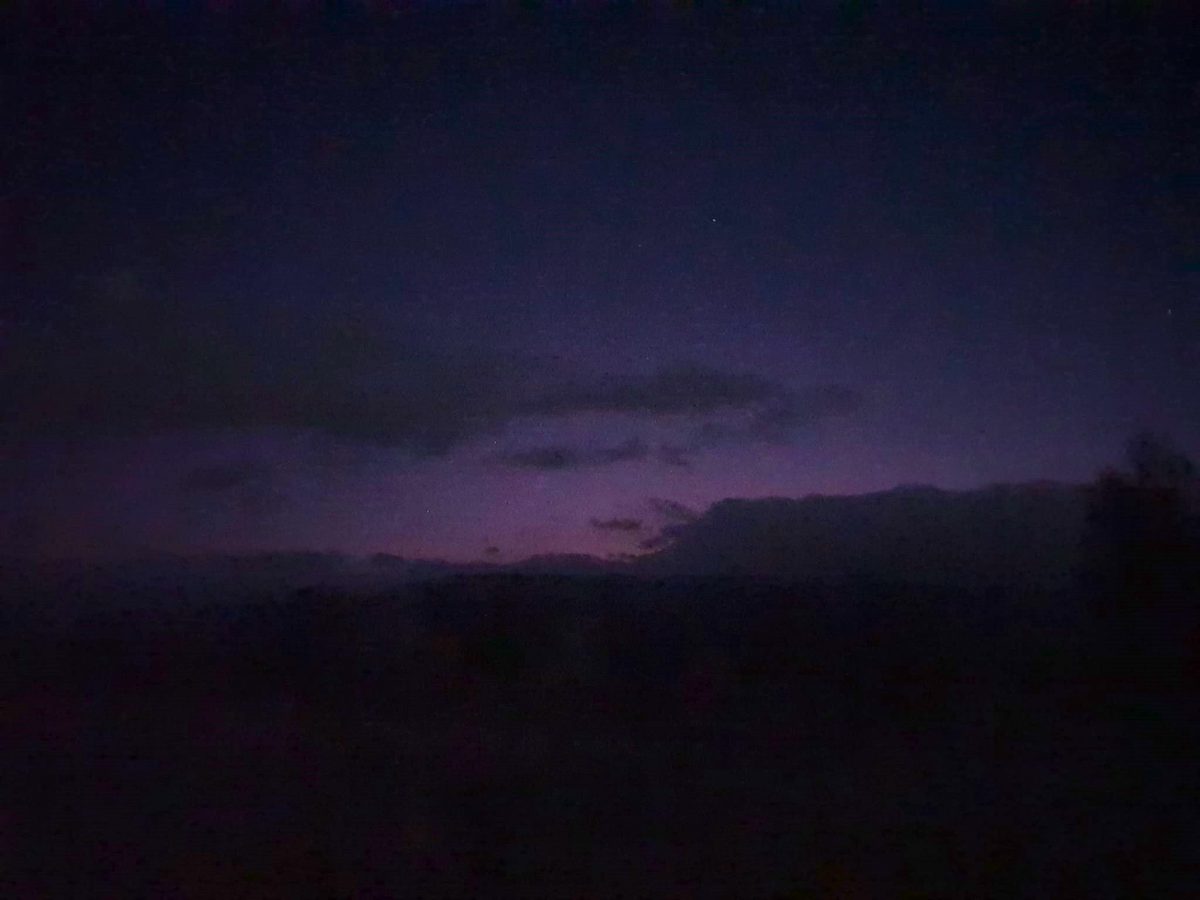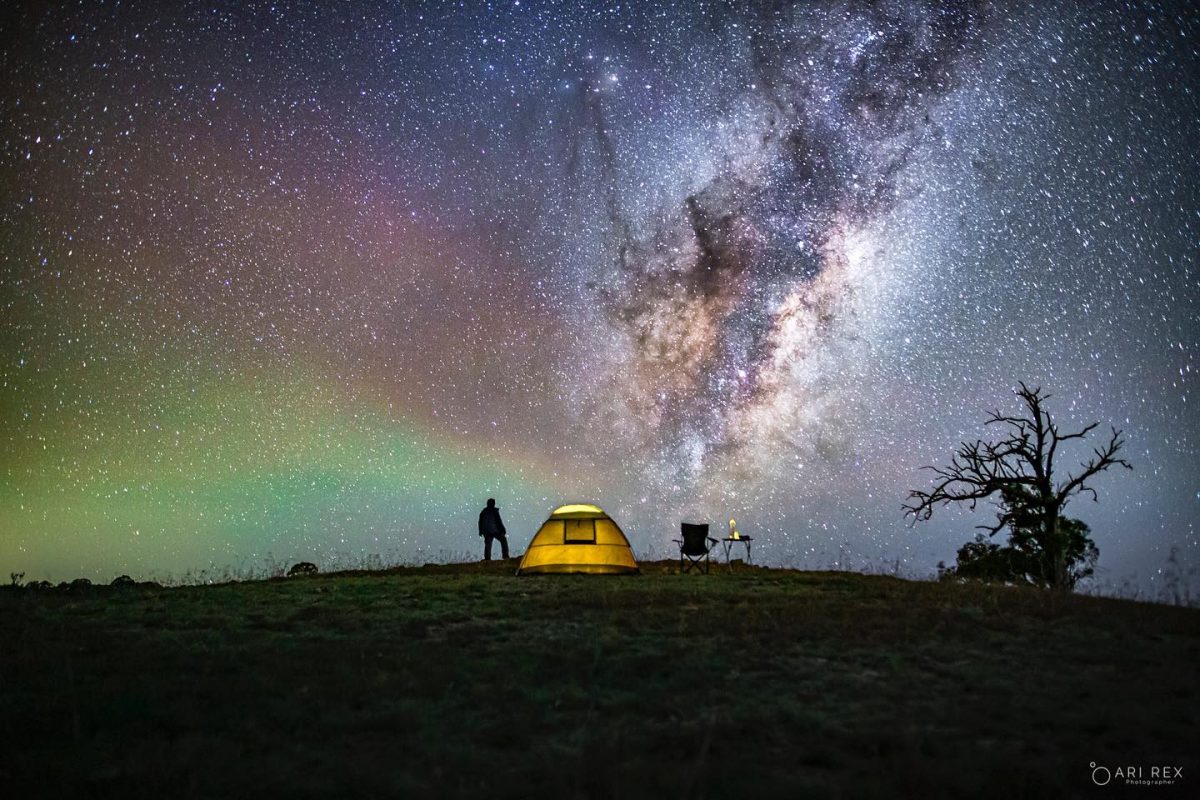
The ‘Aurora Australis’, captured on Williamsdale Road near Queanbeyan. Photo: Em Grey, Facebook.
Canberra’s night sky is on fire at the moment, and it’s got nothing to do with the Enlighten festival.
Local social media has lit up in the past few weeks with shots of what appear to be strange pink-orange or blue-green curtains of light shimmering on the ACT’s southern horizon.
It will look familiar to any watchers of Sir David Attenborough’s documentaries as the ‘Aurora Australis’ (which is Latin for ‘southern lights), but these are typically filmed in the land of snow and ice that is Antarctica. And when it comes to Australia, Tasmania is about the closest place you can normally see it.
So why are we getting reports of nature’s colourful light show as far as Canberra and even Dubbo?
Australian National University (ANU) astrophysicist Dr Brad Tucker describes the Aurora Australis as “nature’s neon lights”.
“Charged gas called plasma leaves the Sun and travels through space,” he explains.
“When it hits the Earth’s magnetic field about 150 million kilometres later, it causes the gas in our atmosphere to be excited and glow. Much like a neon sign, when you put an electrical current through it, it glows.”
The charged plasma is attracted to both magnetic poles, where it normally stays in colourful, concentrated displays. But this year, Dr Tucker says the neon glow is much wider because the sun is putting out more plasma.

The faint glow of Aurora Australis captured from Kambah at 10:55 pm, 1 March 2023. Photo: John Killeen, Facebook.
“We are getting more and more appearances of the Aurora Australis further north,” he says.
“The more energy the plasma has, the more energy that charges are Earth’s atmosphere, and the more it glows further away from the poles.”
The sun’s magnetic field goes through an 11-year cycle, called the ‘Solar Cycle’, during which its north and south poles switch places. Another 11 years and they flip again, creating enormous amounts of energy in the process.
“We are in the beginning of the peak of activity, so we will get more solar storms and more aurora over the next few years,” Dr Tucker says.
“Depending on the strength of the storm, it will be brighter and more visible to the naked eye and last longer. It’s best during the long winter nights and can last for a few hours to even a few days at a time.”
In 1859, there was such a massive storm (even dubbed with its own name – ‘The Carrington Event’ – after its discoverer) the aurora stretched as far as the equator. There was so much electromagnetic power behind it, there were reports of sparking and fires in several telegram stations. It’s thought that if something like it happened again today, it would cause widespread power outages.
“So a really big storm can be seen across large parts of the world!”
It isn’t the first time in recent years for Canberra, either.
In May 2020, Canberra photographer Ari Rex captured it near his home in Taylor.
“It looked like greenish, yellowish lights waving on the horizon,” he says.
“You’d never think to capture this beautiful phenomenon of nature here in Canberra, but this one crystal clear night, I couldn’t believe my eyes when I saw it.”

The Aurora Australis, as it appeared to Canberra in May 2020. Photo: Ari Rex.
Dr Tucker expects the aurora to stick around for a while yet.
“We’re in a period of activity for the sun for the next few years. Over the three to four years, it may be quite a few times that we’ll be able to see the aurora in the Canberra region.”
The Bureau of Meteorology (BOM) also has an aurora forecast, where it issues an ‘Aurora Alert’ when “space weather activity is favourable for viewing aurora is in progress”.
Original Article published by James Coleman on Riotact.

